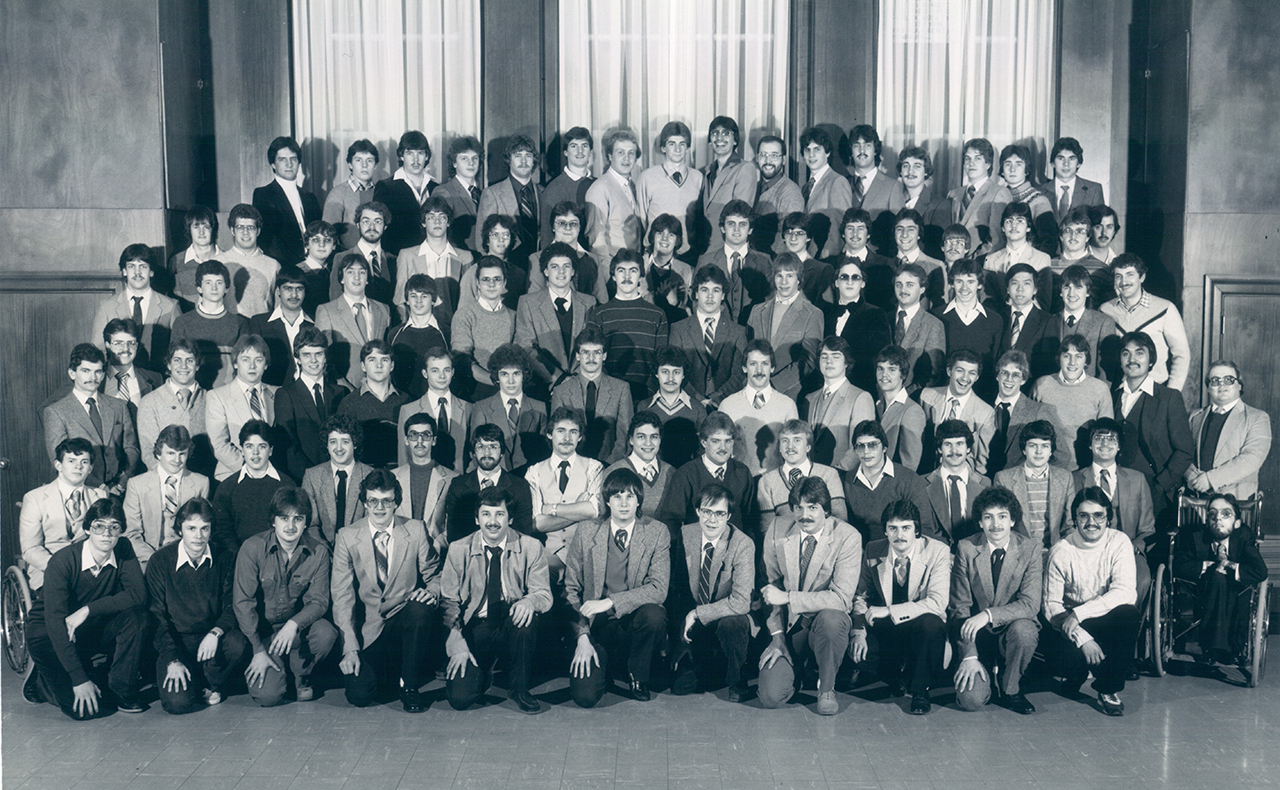Motivating a movement
It was winter in 1983, and Glenn Roy Blundon needed to travel to the north side of the St. John’s campus.
As a wheelchair user, snow and ice made the outdoor route impossible, so Mr. Blundon relied on the tunnel system to navigate campus.
On this day, however, there was an obstruction in a tunnel, and he couldn’t pass.
Mr. Blundon contacted the new Student Volunteer Bureau, and fellow student John Somerton offered to help.
The meeting was fortuitous. Within weeks, Mr. Blundon and Mr. Somerton had revived Memorial’s Organization for the Disabled, known as MOD, which had lain dormant since the late 1970s. They recruited more students to the cause, held meetings and renamed the group MOD 2 with Mr. Blundon elected as the first president.
With the support of his organization, Mr. Blundon set to work. He acquired office space, drafted a constitution and helped the organization receive ratification and funding from the students’ union.
The provincial government had started allocating funds to the university the year prior to improve accessibility on campus. Now there was an active student group to advise and guide the renovations and new additions.
Sidewalks were improved. Concrete ramps were constructed. Key elevators were installed to provide access from the tunnels into the main buildings on the south side of the Prince Philip Parkway.
At that time, Mr. Blundon lived in Doyle House, Paton College, and the renovations to make Doyle accessible were completed following his recommendations.

The residents of Doyle House in 1983. Glenn Roy Blundon is on the right. Photo from Memorial University Archives.
Then, in February of 1984, just days before MOD 2’s first anniversary, Mr. Blundon died at the age of 26.
The funeral took place in Bay de Verde, Mr. Blundon’s hometown. John Hannaford, vice-president of MOD 2 and fellow Doyle House resident, eulogized his friend:
“Glenn started a group which has been instrumental in ensuring that the campus of Memorial University is accessible to disabled students. As president of this organization, Glenn encouraged integration within the group between disabled students and non-disabled students … In doing so he leaves an organization which possess the most positive image on campus.”
Mr. Blundon’s focus on inclusion was one of his most important insights. It attracted more people to the organization, and the rising membership ensured MOD 2’s future success.
In 1985, the residents of Doyle House — with contributions from Mr. Blundon’s family, friends and fellow students — established the Glenn Roy Blundon Memorial Scholarship to recognize academic excellence and a commitment to equity and accessibility on campus.
Inspired by Mr. Blundon’s example, MOD 2 went on to become one of the most progressive and innovative organizations of its kind in Canada.
Then in February 1992, the Glenn Roy Blundon Centre was established to carry on the work of Mr. Blundon and MOD 2. The Blundon Centre’s mission is to provide and co-ordinate programs and services to ensure the academic success of students with disabilities and to promote inclusive values within the university community and beyond.
Today, the centre serves upwards of 1, 900 students a year.
There will always be a need for renovations and improvements to accessibility on university campuses. This isn’t something that should ever be considered complete or finished. But we know who started this work at Memorial.
In a matter of months, Mr. Blundon did more than recommend infrastructure and landscape improvements. He became a voice for inclusion and generated an unprecedented level of awareness.
He started a movement.
